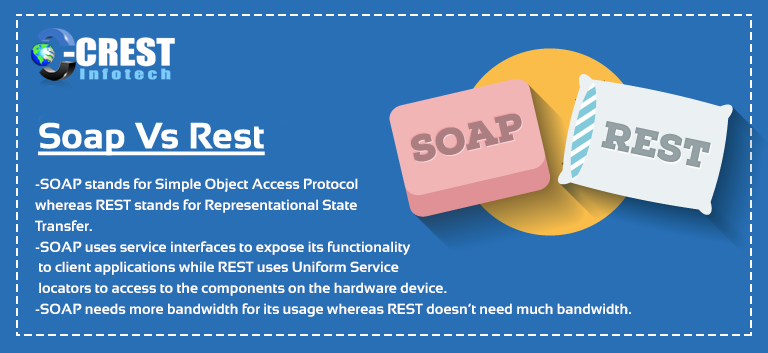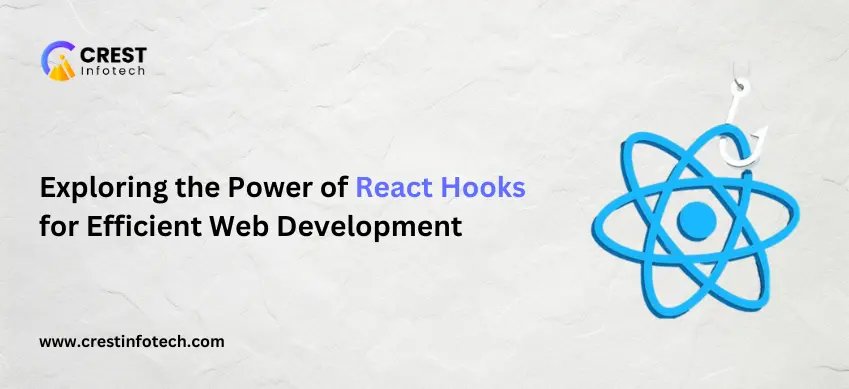Many business owners question themselves when it comes to choosing the API type: should I create my Web API with REST or SOAP? We have seen REST supremacy in the production of the API over the last decade, but SOAP still finds itself in unique industries. Following are what the key differences between them in this post.
Is it all about security?
Imagine having a great time in a restaurant enjoying your lunch and chatting with friends. But when it comes to paying, the most fascinating moment of our brief storey begins. Imagine that the message you want to share with your debit card is and hope that he won’t copy all the details from your card and steal your money—the that’s HTTP.You can give it to the waiter, you can let him go with your wallet, and you can hope that he won’t copy all your card data and steal your money, that’s the HTTP. You can even go or pay at your table with him to make sure he doesn’t see all the confidential data – that’s the HTTPS. And you have the third choice, you can go with the waiter and even stick a black card tape and cover all the data you don’t want anyone to see, and that’s WS-Security.
It does not sound obvious yet, but that the definition will crystallise throughout the entire post. The point was to show that message encoding has different methods, and that has a big effect on data protection. Some industries need to take extraordinary care of the safety of consumers, and that’s why they choose to choose additional security features. And that, of course, affects the selection of the unique API types
One of the key differences between REST and SOAP API is the approach to protection, particularly when we take a look at the use cases. This doesn’t mean, of course, that one solution is secure and the other is not. It’s more of an option between a safe one and a safer one. There’s a lot more to learn about these API forms.
What is REST API?
You’ve already come across this name several times, and, plausibly, this kind of API is a lot closer to you. And as REST API has dominated the market in recent years, it’s not shocking, and now we can claim that REST API is around 70 % of all APIs used on the web. But let’s try to find out exactly what REST API is and what caused its rising popularity.
REST stands for Representational State Transfer.
It’s an architectural pattern designed to take advantage it supports various XML, JSON, HTML or plain. Text data formats. And that’s one of the key explanations for its most popular use, as JSON is able to add further advantages to your project when implemented – it’s probably one of the best practises you can think while working with Maciej’s REST API. REST API is widely thought to be a modern solution, but in reality it is a common misconception, and its increasing popularity in recent years has probably helped to spread it. In 2000, REST was conceptualised, but it is only two years younger than SOAP! Although REST has been with us for almost 20 years, it is still not standardised, which may enable some business owners to opt for SOAP. To explain all of them will take a lot of time, but let’s concentrate on some that might be relevant when compared with SOAP. Statelessness is something we certainly need to point out here. When we speak about stateless communication, we mean that enough information is included in the message you send, so there is no need to bother the server with that information.
The REST API is lighter than SOAP, thanks to this approach, and works much quicker. Caching is another thing that helps prevent an extra load from the server and decreases the load time. It’s a way to boost the scalability and performance of the web and it’s very easy to incorporate with the REST API.
So, as you probably found out, the REST API was stated in HTTP and HTTPS cases in mentioned example at the beginning, so in the second example, your data is secure and this level of protection is appropriate for many companies and start-ups. But what if you wanted an extra way to safeguard confidential data? Good. Well. This is where the SOAP API is brought into action.
What is SOAP API?
From the very beginning, let’s start. SOAP stands for Simple Objects Access Protocol, so we can discern the first distinction between SOAP and REST even at this point. SOAP is a protocol, as the name clearly explains, whereas REST is an architectural pattern that works on protocols such as HTTP and HTTPS. SOAP is highly structured, unlike REST, which has a major impact on its data protection approach.
The possibility of introducing WS-Security in SOAP is still valued by many industries. Everything has its price, however. SOAP provides better protection, but that makes it a much heavier solution and affects efficiency. The fact that this type of API is stateful is also what slows down projects with SOAP API – unlike in the case of REST, in this case, the server retains all the information received from the client across different requests. But there is also the other side of the coin – this state-based approach is useful for flight or hotel booking systems that can display variable information based on the saved data in multiple steps. Offering a highly standardised solution, on the other hand, means a lack of flexibility in implementing the API, which can lengthen the entire process. The data format is another significant difference between the REST and SOAP APIs. Unlike REST, SOAP only supports XML, which is much more boring than JSON. Caching would also be more difficult to implement, as a dedicated cache module is required by SOAP.
REST vs. SOAP API – what should you choose?
You probably expect to get an answer if you’ve read the entire article (you requested an answer, to stick to the API terminology) – should you choose REST or SOAP API? we don’t want to let you down, but we can only give you one reaction – it depends – that everyone hates. It’s a tough decision to choose the right API and you first need to know the answer to some basic questions – what is the objective of your project, who is the user of your app, do you work with sensitive data, etc.? For some start-ups that need to enter the market quickly to attract the attention of investors, a quicker solution would be to decide on REST. Using SOAP implies spending more time studying API documentation in order to act according to the protocol. It provides better security solutions, on the other hand. Everything depends. But it depends on you, so prepare yourself and choose wisely for this decision.
You can also Hire Dedicated Developer and Hire Mobile Developer. Contact Crest Infotech to know more about Dedicated Development services in Details.



